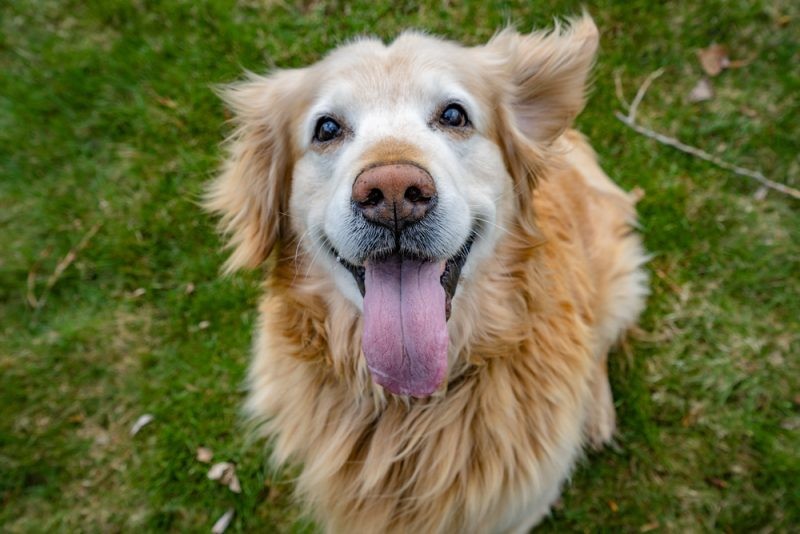
Golden Retrievers, while not excessive droolers compared to breeds like Saint Bernards or Mastiffs, do exhibit normal drooling behavior as part of their physiology. Like all dogs, they produce saliva to aid digestion, regulate body temperature, and respond to various stimuli. While occasional drooling around mealtimes or during excitement is perfectly normal, excessive or unusual drooling patterns can indicate underlying health issues. Understanding what constitutes typical versus problematic drooling in Golden Retrievers is essential for proper care and early detection of potential medical concerns.
Do Golden Retrievers Drool?
Normal Drooling Patterns
Golden Retrievers are considered moderate droolers compared to breeds with loose jowls like Saint Bernards and Mastiffs. They typically drool in response to food anticipation, excitement, or during hot weather. The amount is usually minimal and manageable.
Health-Related Drooling
While some drooling is normal, excessive or sudden drooling can indicate health issues. Common medical causes include:
- Dental/oral problems like infections or foreign objects
- Digestive issues
- Heat stress
- Anxiety
- Idiopathic trigeminal neuritis (more common in Goldens)
- Oral tumors
Any significant change in drooling patterns, especially when accompanied by other symptoms like lethargy, loss of appetite, or difficulty eating/drinking, warrants veterinary attention.
Normal Drooling Habits in Golden Retrievers
Physiological Causes
Golden Retrievers produce saliva for normal digestive functions including lubricating food and maintaining oral health. Like humans, their salivary glands activate in response to food stimuli to aid digestion. The drooling is typically mild and occurs mainly during meal anticipation.
Natural Triggers
Beyond mealtime, Golden Retrievers may exhibit controlled drooling in specific situations like:
- During intense physical activity
- When greeting familiar people
- While playing with toys
- Before receiving treats
- After drinking water
This situational drooling is brief and self-limiting, unlike breeds with drooping jowls that drool continuously. The amount produced is generally easy to manage with basic grooming and doesn't require special accommodations.
Common Causes and Concerns of Excessive Drooling
Medical Conditions
While previous sections covered general drooling patterns, specific medical conditions can trigger excessive drooling in Golden Retrievers including respiratory infections, neurological disorders, and liver/kidney disease. Signs that the drooling is concerning include thick or foul-smelling saliva, blood tinges, and difficulty swallowing.
Emergency Warning Signs
Beyond the normal triggers discussed earlier, certain drooling patterns require immediate veterinary care. According to veterinary guidance, excessive drooling accompanied by symptoms like:
- Retching and vomiting saliva
- Seizures or difficulty standing
- Sudden behavioral changes
- Drooling that persists without obvious triggers Can indicate serious conditions like bloat or poisoning that need emergency treatment. The presence of these symptoms alongside abnormal drooling patterns distinguishes concerning cases from normal salivation.
Managing Golden Retriever Drool
Prevention Techniques
While previous sections covered causes and patterns, practical prevention strategies can help minimize drooling impacts. Key techniques include:
- Regular grooming and facial hair trimming to reduce saliva accumulation
- Using appropriate chew toys to control saliva production
- Maintaining balanced diet and proper feeding schedules
- Consistent dental hygiene routine with dog-specific toothpaste
Environmental Management
Beyond medical considerations discussed earlier, environmental factors play a crucial role in drool management:
- Placing absorbent mats near water bowls and feeding areas
- Using drool bibs or bandanas during high-activity periods
- Keeping indoor temperatures regulated to prevent heat-related drooling
- Having cleaning supplies readily available for quick cleanup
These preventive measures help maintain hygiene while allowing natural drooling behaviors without compromising the dog's comfort or health.
Conclusion
Golden Retrievers are moderate droolers compared to breeds with loose jowls, typically producing saliva in response to normal triggers like food anticipation, excitement, and physical activity. Their drooling is generally manageable and doesn't require extensive accommodation, though it can increase in certain situations like meal times, play, and hot weather.
While some drooling is normal and healthy, excessive or sudden changes in drooling patterns may indicate underlying health issues that require veterinary attention. Pet owners should monitor their Golden Retriever's drooling habits and watch for concerning symptoms like thick or foul-smelling saliva, difficulty swallowing, or drooling accompanied by other behavioral changes. With proper preventive care, including regular grooming, dental hygiene, and environmental management strategies, Golden Retriever drooling can be effectively managed while maintaining the dog's health and comfort.